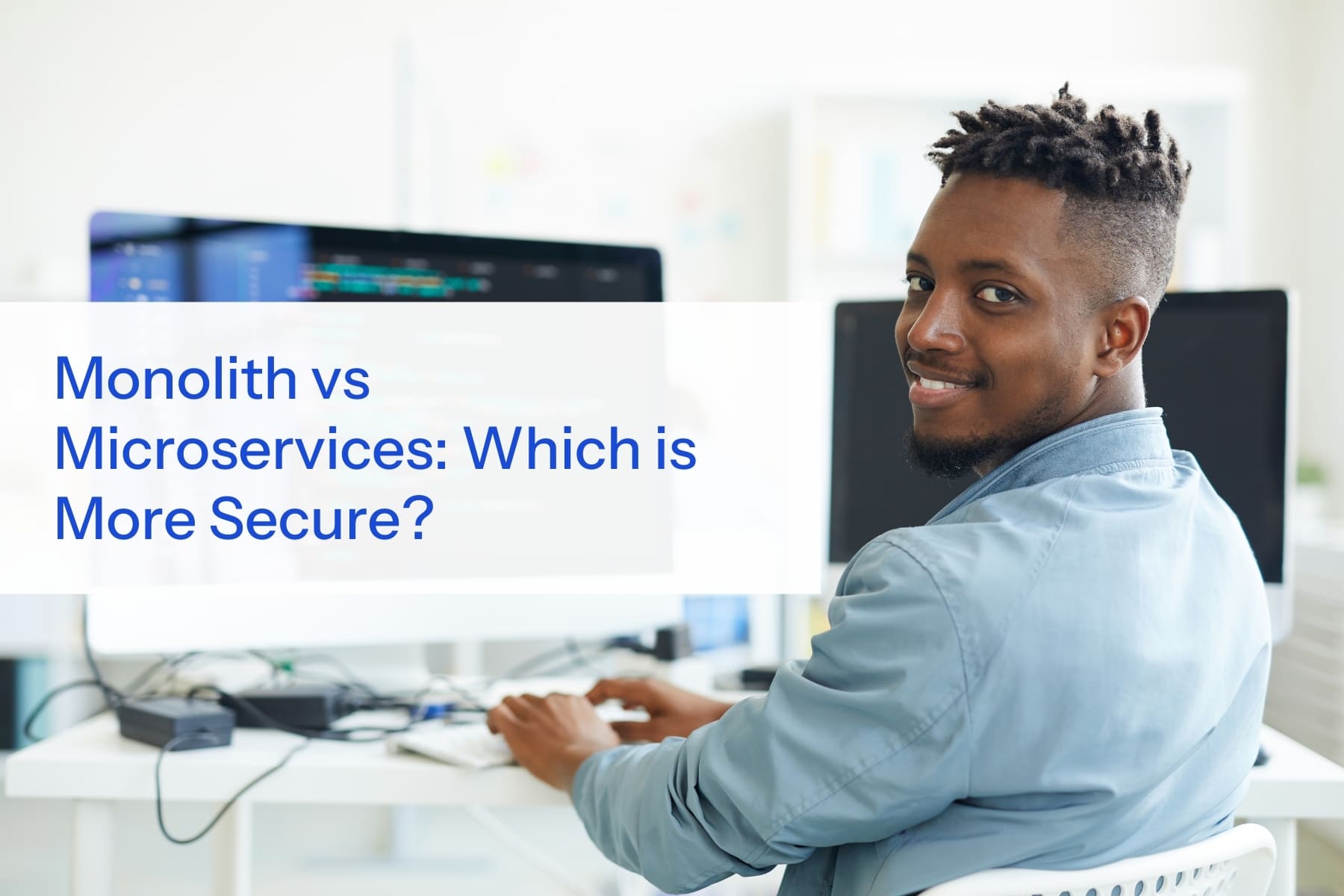Security is a top priority for businesses handling financial transactions, customer data, and insurance records. But when choosing between monolith and microservices architectures, many decision-makers struggle to determine which approach provides better security.
Both architectures have unique security challenges–and making the wrong choice could leave your business vulnerable to data breaches, fraud, and compliance violations.
Let’s break down which architecture is more secure and why.
1. Monolith Architecture: Simpler, but Riskier at Scale
A monolith application is a single, unified system where all business logic, databases, and services are tightly coupled.
Security Risks in Monoliths:
- Single Point of Failure – If one vulnerability is exposed, attackers can access the entire system.
- Limited Scalability – Security updates require deploying the entire application, delaying patches.
- Broad Attack Surface – Since everything is interconnected, an attacker who gains access to one part may move laterally across the entire application.
Why Some Businesses Still Choose Monoliths:
- Easier to centralize security controls in one place.
- Simpler compliance management for financial regulations.
- Lower complexity means fewer security blind spots.
2. Microservices Architecture: More Secure, but Requires Strong Governance
A microservices architecture breaks applications into smaller, independent services – each handling specific functions and communicating through APIs.
Security Risks in Microservices:
- More Attack Surfaces – Each microservice, API, and communication channel must be secure separately.
- Complex Identity & Access Management (IAM) – Proper authentication and authorization across services is harder to manage.
- API Security Risks – Poorly secured APIs can expose sensitive financial or customer data.
Why Microservices Offer Stronger Security (When Done Right):
- Isolated Services – A compromised services doesn’t affect the entire system.
- Zero Trust Model – Enforce service-to-service authentication to prevent unauthorized access.
- Scalable Security – Individual services can receive security updates independently, reducing downtime.
Reality Check: Microservices improve security at scale, but only if businesses implement strong IAM, API security, and monitoring practices.
3. Key Security Considerations: Monolith vs Microservices:
| Security Factor | Monolith | Microservices |
|---|---|---|
| Attack Surface | Centralized, broad impact | Distributed, smaller impact per service |
| Isolated of Services | No isolation – one breach affects all | Each service isolated, limiting damage |
| Scalability of Security | Harder to scale security | Security scales independently per service |
| API Security Risks | Fewer APIs, but critical vulnerabilities | High API exposure, requires strong API security |
| Identity & Access | Easier to manage IAM centrally | Requires strong IAM policies across services |
Conclusion: Microservices offer better security at scale, but businesses must implement API security, IAM, and Zero Trust strategies to prevent vulnerabilities.
4. Best Practices for Securing Microservices in E-commerce, Financial & Insurance Businesses
- Secure API Communication
- Use OAuth 2.0, JWT, and API gateways.
- Enforce rate limiting to prevent API abuse.
- Implement Zero Trust Architecture
- Every microservice should authenticate before communicating with another.
- Enforce least privilege access for service-to-service interactions.
- Real-Time Threat Monitoring
- Use SIEM solutions (Splunk, Azure, Sentinel, AWS Security Hub) to detect anomalies.
- Encrypt Data at Rest and in Transit
- Implement end-to-end encryption (TLS 1.2+).
- Use security key management systems (AWS KMS, HashiCorp Vautl).
- Secure CI/CD Pipelines
- Scan for vulnerabilities in containerized microservices.
- Automate security testing in every release cycle.
Conclusion: Which Should You Choose?
✅ Choose Monolith if:
✔️ Your business is small and doesn’t require frequent updates.
✔️ You need simpler security management with centralized controls.
✔️ You compliance requirements favor a single system.
✅ Choose microservices if:
✔️ You are a fast-scaling e-commerce, financial, or insurance business.
✔️ You want to isolate services to reduce attack impact.
✔️ You have strong API security, IAM, and real-time monitoring in place.
Final Takeaway: Security in cloud-native applications is less about monolith vs. microservices and more about how security is designed, implemented, and monitored. Microservices win for scalability, but only with proper security governance.

